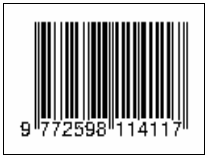Arabica Coffee Development Model in Alleviating Poverty in West Sumatra
Abstract
Full Text:
PDFReferences
Badan Pusat Statistik. (2017). Garis Kemiskinan Menurut Provinsi 2013-2017: Badan Pusat Statistik.
BPS - Statistics of Sumatera Barat Province. (2020). Sumatera Barat Province in Figures 2020. Padang: BPS - Statistics of Sumatera Barat Province.
BPS-Statistics of Solok Regency. (2020). Solok Regency in Figures 2020: BPS-Statistics of Solok Regency.
BPS-Statistics of Solok Regency. (2021). Solok Regency in Figures 2021: BPS-Statistics of Solok Regency.
Coudouel, A., Hentschel, J. S., & Wodon, Q. T. (2002). Poverty Measurement and Analysis. A Sourcebook for poverty reduction strategies, 1, 27-74.
CRIEC and World Bank. (2002). The Performance Analysis of Cocoa (Report Studies on Smallholder Tree Crops Production and Poverty Alleviation): Center Research Institute for Estate Crops (CRIEC) & World Bank.
Dinas Perkebunan Provinsi Sumatera Barat. (2014). Program Nagari Model Dinas Perkebunan Sumatera Barat. Retrieved from Padang:
Fahrezi, R. (2017). Analisis Pendapatan Dan Keuntungan Usahatani Kopi Arabika Anggota Koperasi Solok Radjo Dengan Bukan Anggota Koperasi Di Kecamatan Lembah Gumanti Kabupaten Solok. (S1). Universitas Andalas,
Padang.
Gordon, D. (2006). The Concept and Measurement of Poverty. Poverty and Social Exclusion in Britain. The Millennium Survey, Policy Press, Bristol, 29-69.
Greeley, M. (1994). Measurement of Poverty and Poverty of Measurement. Ids bulletin, 25(2), 50-58.
ICO. (2021). Coffee Market Report September 2020. Makoka, D., & Kaplan, M. (2005). Poverty and Vulnerability-an Interdisciplinary Approach.
Sriastuti, E. (2017). The Impact of Coffee Certification on the Economic Performance of Indonesian Actors. (Ph.D.). Universitaire Pers Maastricht,
Statista. (2021). Coffee Export Volumes Worldwide in December 2020, by Leading Countries (in 1,000 60-Kilo Sacks). Retrieved from
https://www.statista.com/statistics/268135/ranking-ofcoffee-exporting-countries/. World Bank Institute. (2005). Introduction to Poverty Analysis.
In: World Bank Institute Washington, DC
Refbacks
- There are currently no refbacks.








